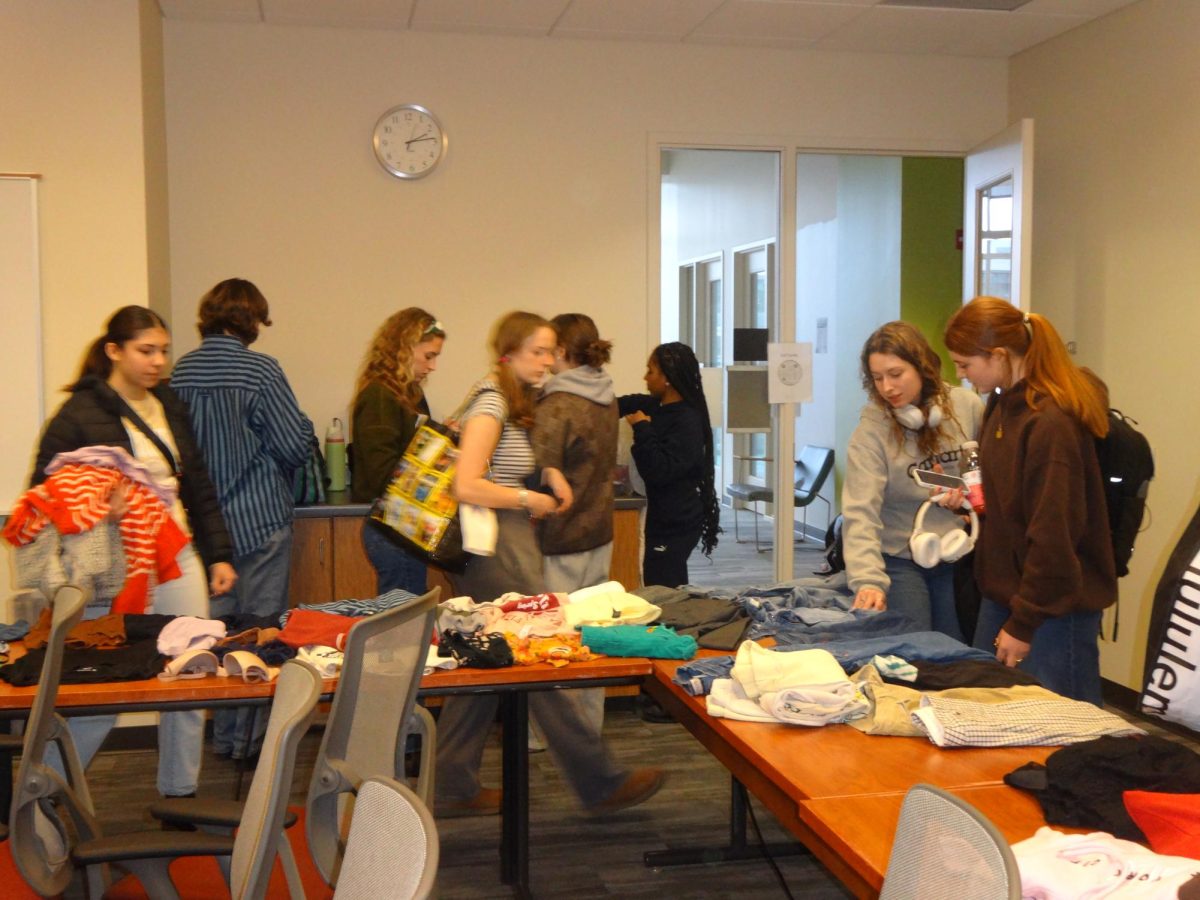Clothing trends go in and out of fashion often on a whim, but research has found fast fashion has negative environmental impacts. The University of Wisconsin club Re-Wear It offers a way to keep up with the trends while staying environmentally conscious.
Re-Wear It is a sustainable fashion club on campus that advocates for conscious consumerism by providing sustainable options for college students.
Re-Wear It Co-president Sonakshi Garr said fast fashion is characterized by “micro trends” that appear in pop culture. Shein and Amazon are usually two of the most popular stores selling clothes that follow those trends. Garr said fast fashion is often low quality and not sustainable.
UW Business Operations and Information Management professor Xiaoyang Long, who co-authored a 2021 study on the environmental impacts of fast fashion, said speed is the goal of fast fashion in order to keep up with the constantly changing trends.
Long said fashion trends have always changed quickly, but with the development of social media, they now change even faster. Instead of trends changing in a weekly or monthly magazine, trends can change in a day on TikTok.
This causes issues for other companies that aim for quality, Long said. As they introduce more styles, they tend to have more leftover inventory. If these companies change their production system closer to fast fashion, the quality of their clothes will most likely decrease.
Long said the life cycle of a piece of clothing has many stages — pre-production, production and post-production. Farmers grow cotton and factories use cotton to sew clothes. Then the clothes are sold, worn and eventually thrown away.
Every stage of manufacturing causes pollution, Long said.
“[After] there is a post-consumption waste … how long does it take the consumer to be done with the clothes and throw it away?” Long said. “Or do they recycle it? Do they reuse it? What’s the lifetime of that?”
Long said fast fashion has operational innovations that claim to help the environment. Fast fashion companies consistently test the market to see what is selling and trending. They have produced a large variety of different styles in small quantities to test these trends. Since the companies are producing small batches, they can be considered eco-friendly because they are not wasting clothes if they aren’t sold.
That is not the full story, though. Long said one important implication of the supply chain is the environmental aspect.
When companies are making smaller batches, they are prone to use poor quality materials for their clothes, Long said. As the clothing quality is reduced, the longevity of clothing is reduced. It is a problem because after every wash, the quality decreases and eventually rips and tears occur.
Long said instead of wearing a sweater for years, consumers are more likely to wear a poor-quality sweater once or twice before throwing it away. It is a vicious cycle — the consumer buys cheap clothing, wears it once or twice, throws it away and then buys another. This cycle causes natural resources to be drained faster.
Throwing away the clothes adds to landfills and the chemicals pollute the waterways, Garr said. These low-quality clothes are typically made of plastic polyester and are not biodegradable. This means they take a long time to decompose, harming the environment.
Garr said there are some benefits to fast fashion — options and convenience. Thrift stores have a limited range of sizes, and people who shop larger sizes, are tall or very petite cannot always find a piece that will fit them there. It is more convenient to quickly hop online and buy a piece in their size for less than $10 than going thrift shopping, where one has to look through racks of clothing.
“I mean the good [of fast fashion] is accessibility … which is why we [Re-Wear It] are so focused on building our own inventory in a diverse way,” Garr said. “We’re just trying to get people away from that [fast fashion], but we acknowledge and see the ease that fast fashion has provided.”
Garr said consumers buy these cheap clothes, only to wear them once or twice before they donate or throw them away. Unfortunately, many donated clothes don’t make it to thrift store storefronts if they are ripped or torn.
Re-Wear It offers a sustainable program to combat this issue, Garr said. The club teaches students the importance of mending and repairing clothes and offers sewing machines so students can fix their clothes instead of buying new ones or throwing them away.
Garr said the club hosts clothing swaps every other Friday, where students can pick out free clothes. It has a store of donated clothes they have collected over the years but encourages people to bring clothes to donate when going “shopping” at the swap.
“People like to go out, they like to have new clothes. But a lot of the time, when you just buy from Amazon or Shein, you’re supporting an entire system of environmental oppression, essentially,” Garr said. “So we’re trying to get people away from that and give them a chance to refresh their wardrobe, in an easy, accessible, free way.”
Re-Wear It wants to help people understand the clothes they already own have value, Garr said. If a person doesn’t think they’ll wear a piece of clothing more than 10 times, it is not a good purchase.
For people to make more sustainable decisions, Long said they need to follow the three R’s of sustainability — reduce, reuse and recycle. To reduce means buying fewer clothes and buying higher quality. To reuse means selling old clothes and buying second-hand clothes. And to recycle means donating old clothes.
Long said in France, the government has taken a stance against waste in the fashion industry. The French government is debating on passing a fast fashion tax, similar to the cigarette tax. Government regulation can promote change in the fashion industry by offering economic incentives for greener fashion.
“The most revolutionary thing you can do for sustainability is just be more conscious,” Garr said.








